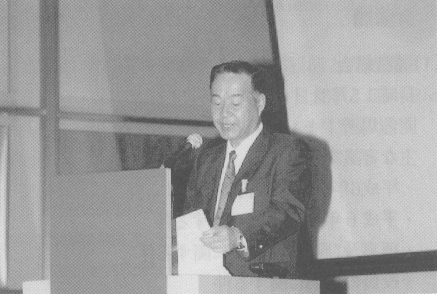The '95 RWC Symposium was held over four days at TEPIA Hall in Tokyo from June 12 through 15. At this symposium, held yearly as an internal forum, the previous year's research results were presented and discussed by RWC program participants. This symposium is unique because it is an opportunity for researchers in all fields in the RWC Program to gather in one location.

Presentations were made based on last year's research results with particular emphasis on originality; each presentation was allowed only 20 minutes (15 minutes for the presentation and five minutes for questions and answers). Since in the RWC Program there are many laboratories in those fields related to theory, novel functions and neural systems, the first two days were assigned to presentations from these fields. The third day was assigned to presentations related to massively parallel computing, and the final day to presentations on optoelectronics technology. There w'ere 48 papers submitted on the first and second days, 14 on the third day, and 17 on the final day, for total of 79. There were 195 participants, mainly from Distributed laboratories, and Subcontractors both domestic and overseas. Since there were many foreign participants, English was the official language of the conference, for drafts and presentations.
Although some drafts were written without diagrams or references, most followed standard style. Some presenters could have been better prepared, but most presentations were well done. Some presentations deviated a little from the goals of the RWC Program, but most were relevant. Discussions were active and, particularly on the first day, went past closing time by 20 minutes. Even during coffee breaks participants I continued their active exchange of opinions. Some busy researchers, however, attended the symposium just for their own presentations.

The following are comments from the chairpersons: There were four presentations in fields related to novel functions, including one from the Tsukuba Research Center concerning real-tirne information integration of speech, gestures, images and data base. These were all very useful to the other researchers in helping them consider research directions.
Related to massively parallel systems, some presentations were generalized because some researchers wanted to present their whole accomplishments over the last year. There were impressive presentations from the Tsukuba Research Center on the design of the RWC-l testbed prototype system and the massively parallel programming environment.
Optoelectronics technology has improved generally when compared with the last year's results, clearly demonstrating research progress. I would like to express my heartfelt thanks to MITI and all those concerned for the cooperation extended throughout this symposium.